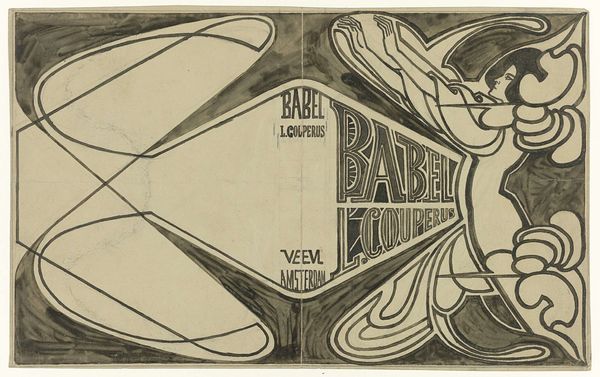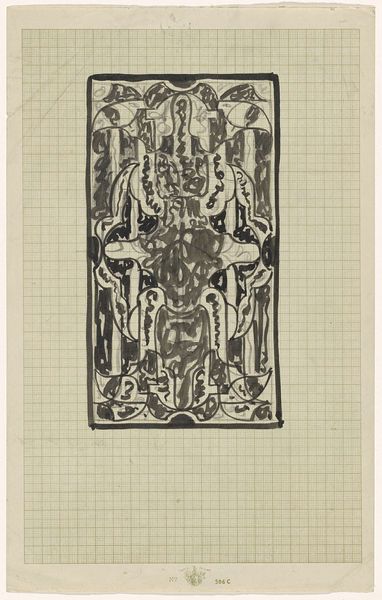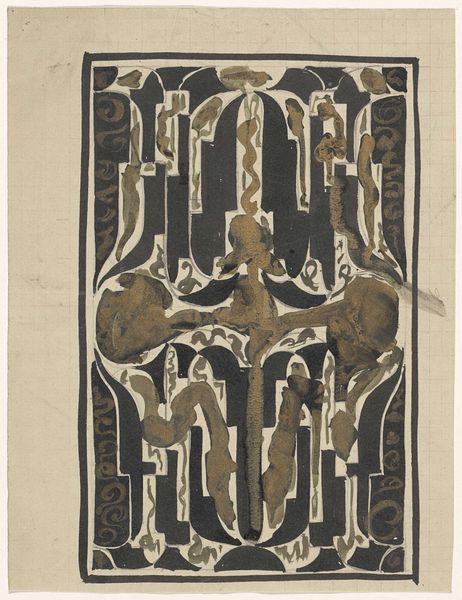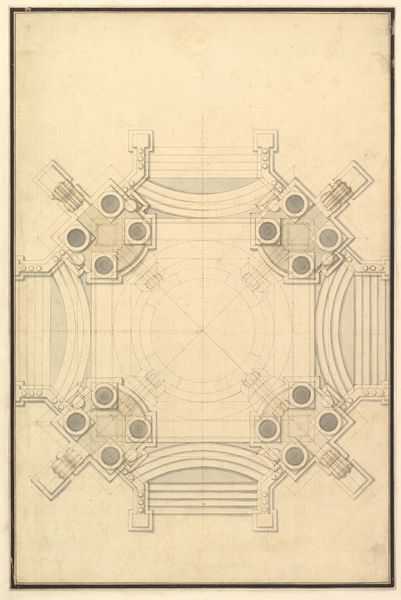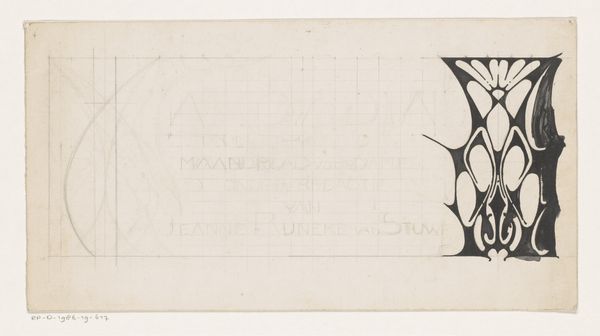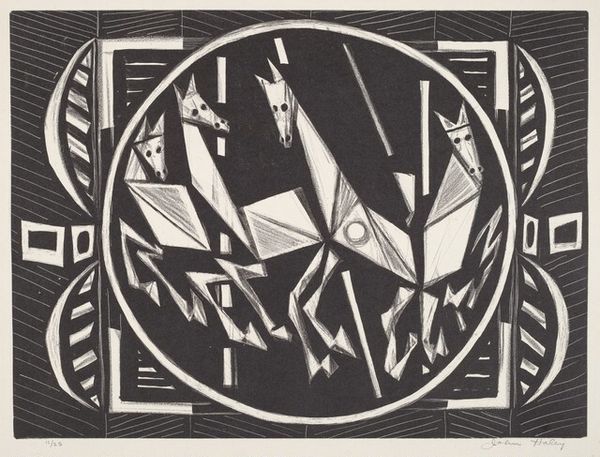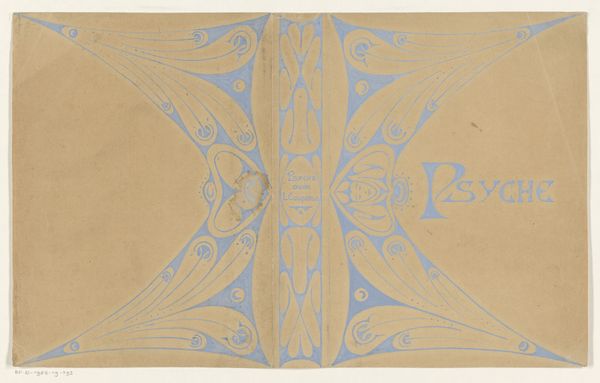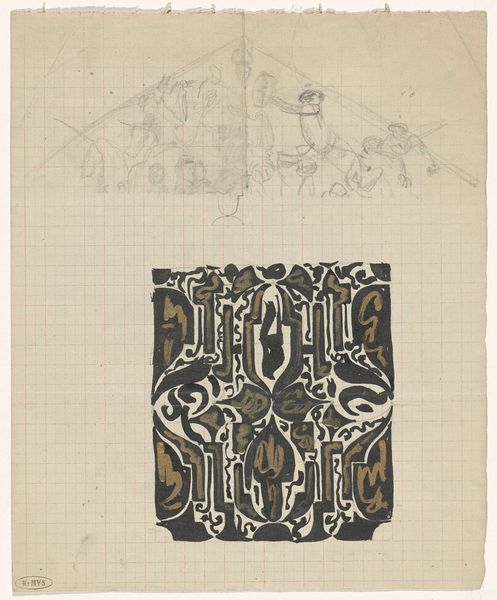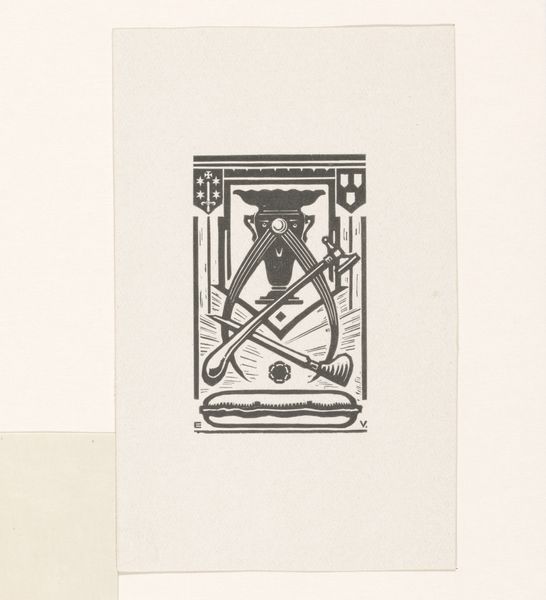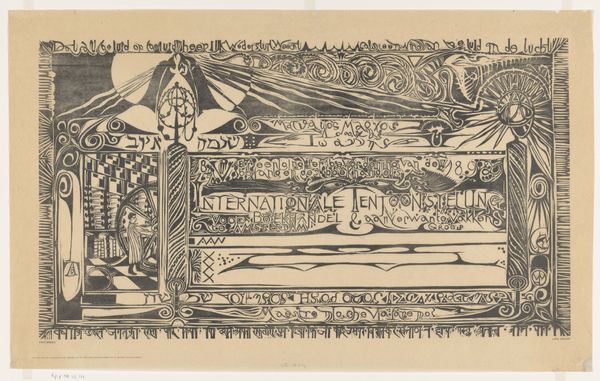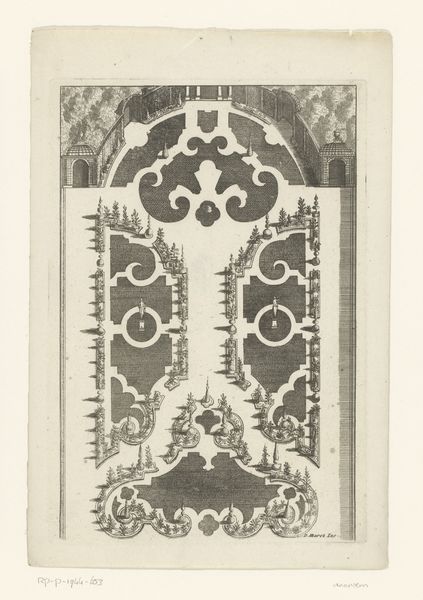
Dimensions: height 252 mm, width 370 mm
Copyright: Rijks Museum: Open Domain
Curator: Wow, look at this piece. It evokes a strong sense of turn-of-the-century mystique. Editor: That's Jan Toorop's design for the cover of Henri Borel's "Een Droom" from 1899, a drawing rendered in ink, exhibiting characteristics of both Art Nouveau and Symbolism. The Rijksmuseum holds it now. It immediately strikes me by how much it resembles a book cover influenced by both Javanese and Symbolist aesthetic principles that speak directly to this time of production! Curator: Absolutely! Notice the use of thick, black ink, really grounding the image. It also appears to involve typography quite closely; could we call this the precursor of contemporary graphic novels? Editor: Well, considering that Toorop worked closely with printing houses and was aware of different papers that would highlight and flatten the effect of ink in the printing process. The materiality speaks to industrial developments enabling the circulation of literary imagery! These sorts of things were highly collaborative, where writers, artists, and publishers played into one another’s professional circles, even creating marketing events around literature. Curator: It's amazing how the design visually encapsulates the essence of "A Dream". What I see reflected in it, that has historical parallels, is an intellectual environment concerned with expressing complex themes visually. Think about its place within European avant-garde movements too, when writers had literary salons—the publishing houses helped facilitate these artistic convergences in public culture. Editor: Indeed! And think of what they imagined literature could achieve! They explored new realms for understanding subjectivity and experience with new, accessible mediums for distribution like printed books. The use of labor, for instance, is not necessarily concealed because you are seeing it now in the Rijksmuseum, but it’s clearly visible through drawing. The drawing allows more opportunity to engage the labor as more expressive! Curator: I’m going to have to remember the collaborative efforts and marketing implications involved for the next time I’m considering Art Nouveau generally, now I’m not just looking at style, I'm imagining the network of authors, publishers, patrons, all in collaboration and negotiation. Editor: Exactly! It’s remarkable how much insight can be drawn about not only art itself, but even more broadly culture in general.
Comments
No comments
Be the first to comment and join the conversation on the ultimate creative platform.

